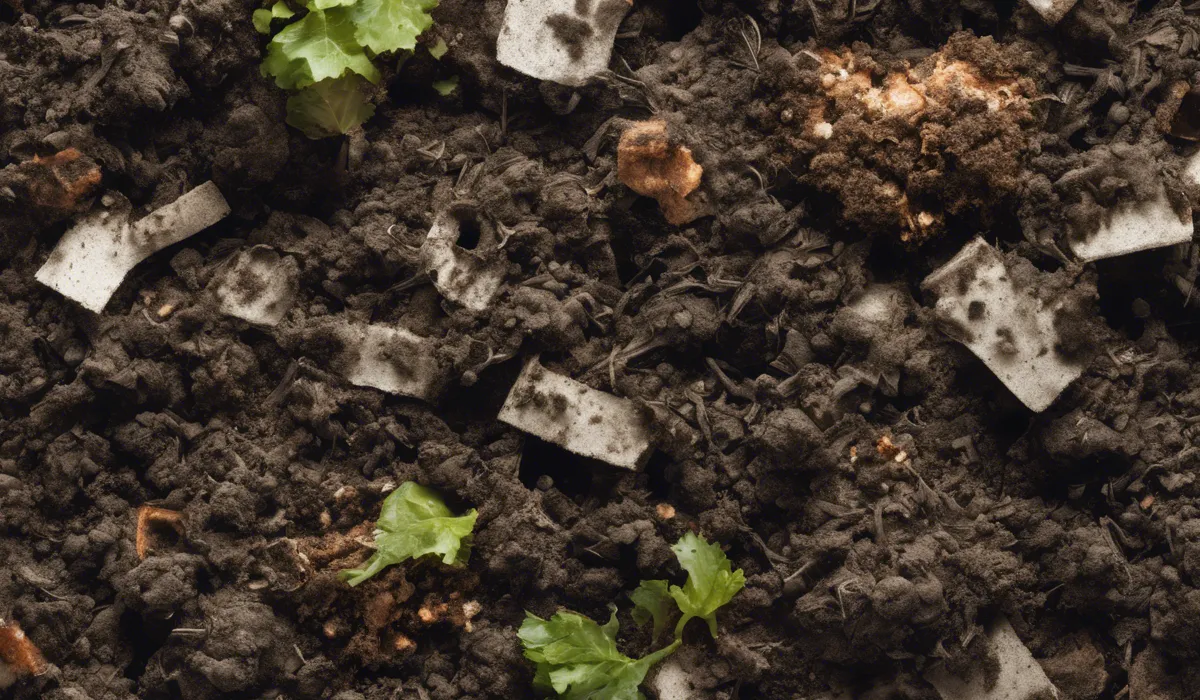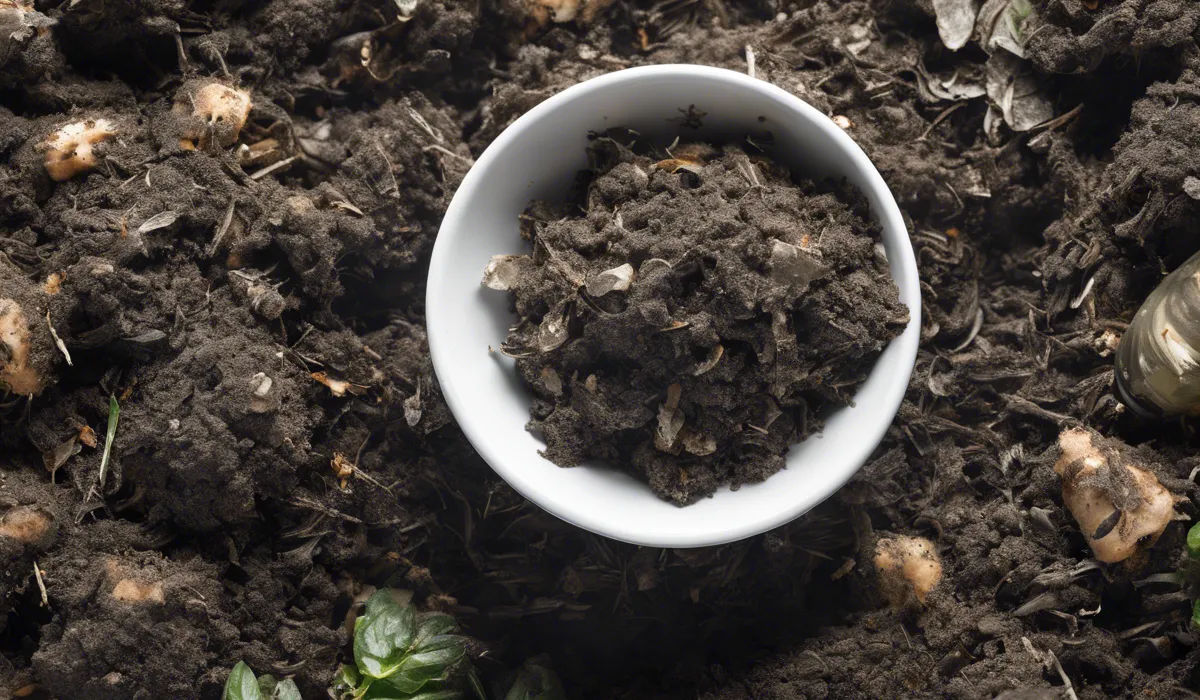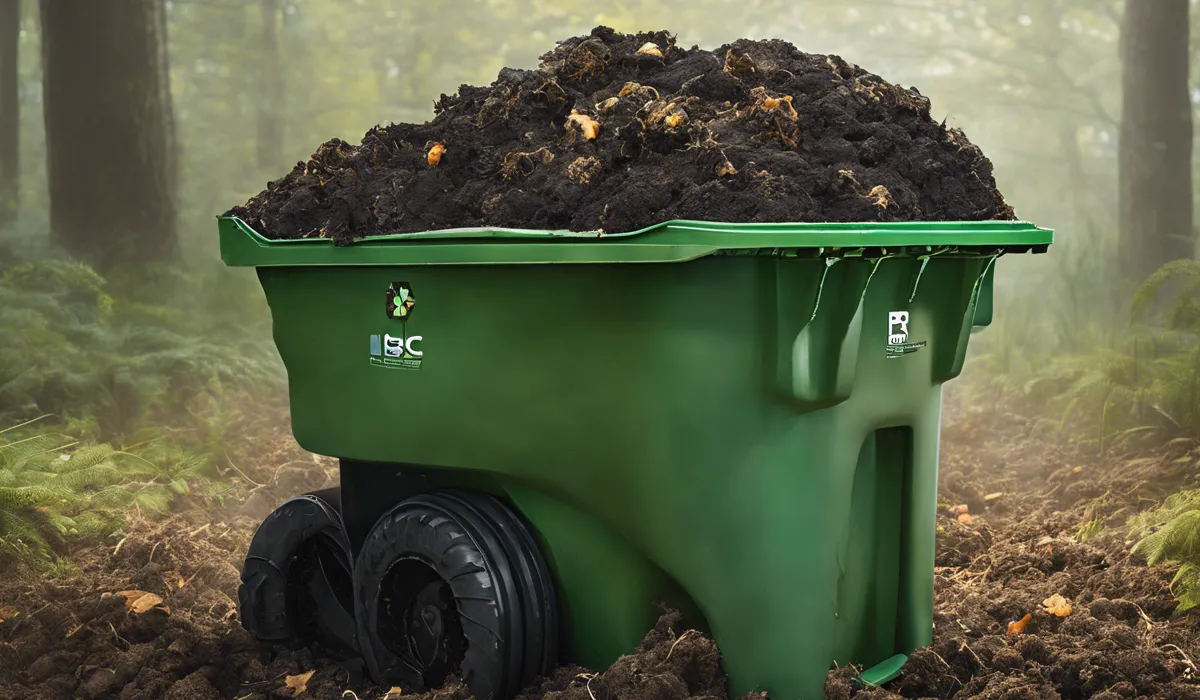Mold is generally not bad for compost; it’s a natural part of the decomposition process. Mold helps break down organic material, contributing to the creation of nutrient-rich compost. However, certain molds can indicate anaerobic conditions, which may require compost aeration.
Understanding Mold in Composting Processes

Composting Defined and Its Goals
Composting is a natural method where organic waste decomposes into a nutrient-rich material known as compost.
This process turns kitchen scraps, yard waste, and other biodegradable materials into a valuable amendment for soil, enhancing its quality and fertility.
The ultimate aim is to recycle nutrients back into the ecosystem, reducing waste and supporting plant growth.
Microorganisms
Microorganisms, including bacteria, fungi, and protozoa, play a crucial role in breaking down organic matter. They consume waste as their food, converting it into compost through digestion.
The balance of these tiny organisms is essential for efficient composting, as they each have specialized functions in the decomposition process.
Mold Explained
Mold is a type of fungus that appears as woolly or fuzzy growths on organic material. It thrives in warm, moist conditions and is a common sight in compost piles.
While some view it as a sign of decay, it is a natural and beneficial part of composting. Common types of mold found in compost include Aspergillus, Penicillium, and Mucor species.
Mold’s Role in Organic Decomposition
In nature, mold is one of the primary agents of decomposition. It breaks down complex organic compounds into simpler substances, making them available to plants.
Seeing mold in a compost pile is a good sign that the decomposition process is active and on the right track.
Impact of Mold on Compost Quality

Mold’s Positive Effects in Composting
Mold has several positive effects on compost. It helps decompose tough plant fibers, speeds up the breakdown process, and plays a vital part in nutrient cycling, converting waste into valuable compost.
Concerns with Mold in Compost
While most molds are harmless, some can be worrisome. Pathogenic molds can cause disease in plants and humans, and mycotoxins produced by certain molds may be harmful.
An overabundance of mold can also upset the microbial balance necessary for a healthy composting process.
Pathogenic Molds and Mycotoxins
Pathogenic molds, such as those from the Fusarium and Aspergillus genera, can pose risks.
They can cause plant diseases or produce mycotoxins, which are toxic substances that can contaminate compost. It’s critical to manage these molds to ensure the safety of the compost produced.
Mold and Microbial Balance
A diverse microbial population is crucial for effective composting. If mold growth becomes dominant, it can suppress other beneficial microorganisms, disrupting the balance.
A healthy compost pile should have a variety of microorganisms, each contributing to the decomposition process.
Managing Mold in Your Compost Pile

Maintaining a Healthy Compost Pile
To keep your compost healthy and mold at bay, it’s essential to aerate the pile regularly, balance green (nitrogen-rich) and brown (carbon-rich) materials, and monitor the moisture level so it’s like a wrung-out sponge.
Aeration Techniques
Aerating your compost introduces oxygen, which helps aerobic bacteria thrive and decompose materials faster.
This can be done by turning the pile with a fork or using an aerating tool to create air passages.
Balance of Materials
Striking the right balance between greens and browns is key. Greens provide nitrogen while browns add carbon.
The ideal ratio is about 3 parts brown to 1 part green. This balance helps maintain an environment less conducive to harmful molds.
Moisture Monitoring
Too much moisture can create anaerobic conditions, favoring the growth of unwanted molds. Check the moisture level regularly and add dry materials or water as needed to maintain the ideal moisture level.
Identifying Harmful Molds
Keep an eye out for signs of harmful mold, such as a foul odor or a white, slimy appearance.
These can indicate that pathogenic molds are present and that the compost pile’s conditions need adjustment.
Discouraging Pathogenic Molds
If harmful molds are detected, altering the pile’s environment can help. This can include increasing aeration, adjusting the green to brown ratio, or even starting a new pile if necessary.
Handling Moldy Compost Safely
When dealing with moldy compost, wear protective gear like gloves and a mask to avoid inhaling spores.
Use moldy compost with caution, and if in doubt, it’s better to dispose of it than to risk contaminating your garden.
Using Moldy Compost
When it comes to using compost that contains mold, apply it to non-edible plants to avoid any potential health risks.
For edible gardens, it’s best to use compost that is mold-free or has been treated to eliminate harmful pathogens.
Treating or Disposing of Overly Moldy Compost
If compost is too moldy, consider treating it by exposing it to sunlight, which can kill many types of mold spores.
If the compost is beyond salvage, dispose of it away from your garden to prevent the spread of any potential pathogens.
FAQs About Mold in Compost
Is mold in compost harmful to the composting process?
No, mold is generally not harmful to the composting process; it plays a natural role in breaking down organic matter.
Can the presence of mold improve the quality of compost?
Yes, mold can contribute to the creation of nutrient-rich compost by helping decompose organic material.
Does mold indicate that the compost pile is healthy?
Mold can be a sign of a healthy compost pile as it indicates active decomposition, but excessive mold might also signal anaerobic conditions.
Should I aerate my compost if I notice a lot of mold?
If you notice a significant amount of mold, especially if it’s accompanied by foul odors, it may be a sign to aerate your compost to reintroduce oxygen.
Are there any types of mold that are bad for compost?
While most molds are beneficial, certain types can indicate poor compost conditions, such as anaerobic spots, and might require intervention.
Final Thoughts
Mold is a customary and beneficial component of the composting process, aiding in the breakdown of organic materials to produce rich compost.
While generally not harmful, the presence of certain molds can signal anaerobic conditions, suggesting that the compost pile may benefit from increased aeration to maintain optimal decomposition.
